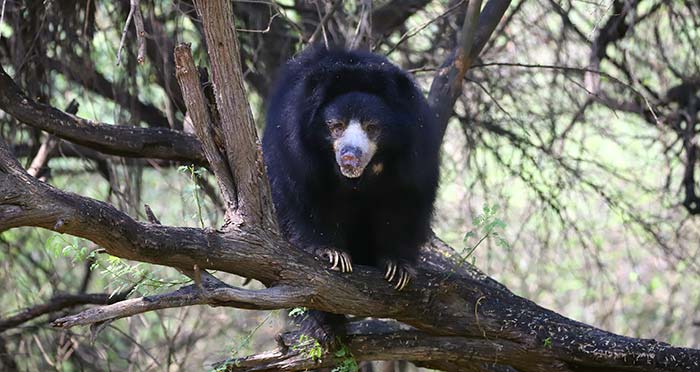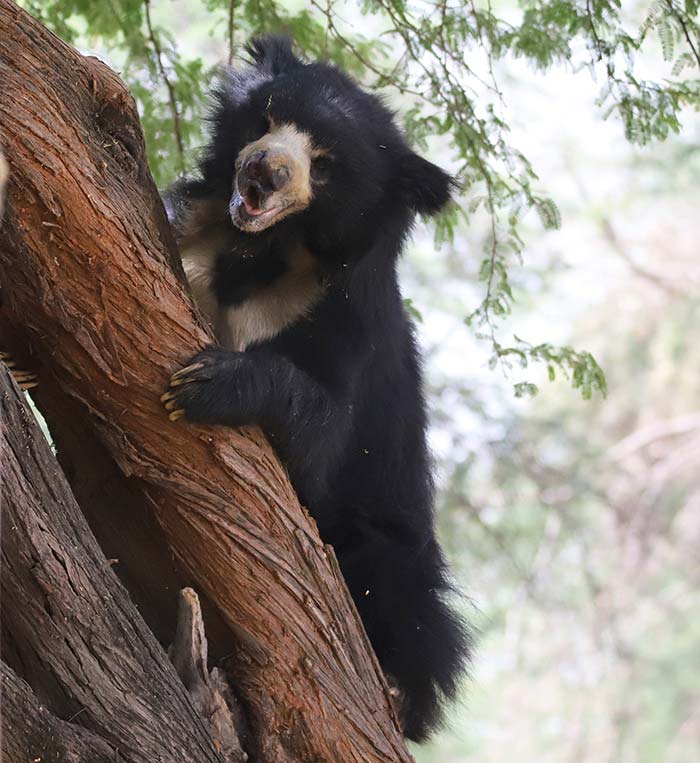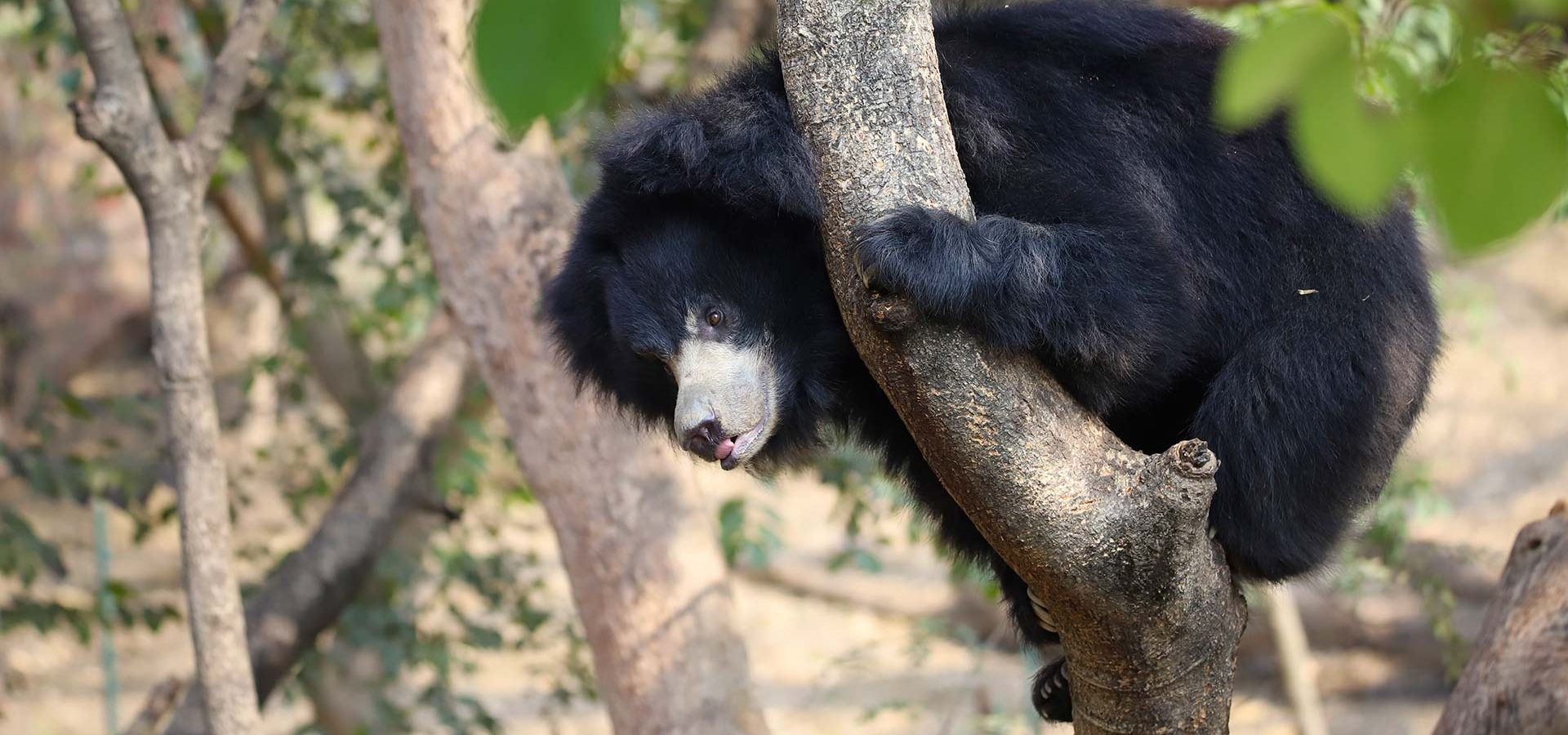If you have ever had the good fortune to visit one of the Wildlife SOS sloth bear rescue facilities, you have probably seen sloth bears climbing or hanging out in trees. Though 50% of a sloth bear’s diet is made up of termites and ants, the other 50% is made up of fruits, seeds and, if they are lucky, honey. So, sloth bears often scale trees to get at food. On the surface it appears that sloth bears are excellent climbers. But are they?

Bears, mammals in the Family Ursidae, began as forest animals. They evolved in forests and some slowly radiated outside of forest habitats. The brown bear, for example, though believed to have initially evolved in forested areas, eventually radiated into more open areas away from the forest. Polar bears, which evolved from the same stock as the modern brown bear about one million years ago, live in completely treeless habitat. But at their core, bears are forest animals. In the tropical forests of Asia there are 3 species of bear, the sloth bear, the Asiatic black bear and the sun bear. Two of these species have remained forest bears, the Asiatic black bear and the sun bear. The sloth bear, however, is more of an open forest / grassland bear. The reason for this is likely that the sloth bear evolved to take advantage of termites and ants on the open landscape. They evolved to be efficient predators of these tiny insects by having large claws for digging, a raised palette to suck termite out of their nests with great force, and the ability to independently close their nostrils, probably an adaptation to keep termite soldiers out of their nasal cavity. Long claws, though great for digging, are not that great for climbing.
Asiatic black bears and sun bears are world class climbers. Incredibly agile and comfortable in the trees these species make the sloth bear look like a clumsy awkward climber. Yes, sloth bears can get up and down a tree when food motivated, but they don’t take climbing to the artform other bears in Asia. And trading in climbing ability for digging ability does have its ramifications. In Asia there is a large predator known as a tiger, maybe you’ve heard of them. Tigers will kill and eat bears of all kinds. How do sun and Asiatic black bears avoid becoming a tigers next meal? They climb. They climb to escape predation. But what about sloth bears? Are they able to quickly scamper up a tree to reach safety. In short, no, they most certainly can not. So, what do they do? They get aggressive. Infamously brave and aggressive.

Bear cubs of most species learn to climb very early in life and take to it like a duck to water. And they have to, because their life depends on it. Even brown bear cubs are excellent climbers, and often climb to escape predation (often at the hands of adult male brown bears). But as brown bears grow and their girth increases, they become diggers and not climbers. American black bears are also world-class climbers and do not only climb as cubs, but as adults. Many cabin owners with a bird feeder can attest to the climbing abilities of an American black bear. Sloth bear cubs, on the other hand, don’t climb trees but rather climb up on their mothers back. Because if you can’t climb a tree to escape a tiger, best to take your chances on mom’s back as she attempts to chase off the would-be predator.

Can sloth bears be seen in trees? Sloth bears can certainly climb, but compared to some others in the bear world, they are inefficient climbers to say the least. They have traded in their climbing claws for their digging claws. And since they can’t climb to escape potential predators, they have gotten more aggressive. It is clear that the lack of climbing ability in sloth bears has affected other aspects of their ecology and evolution.
Wildlife SOS has become a world leader in sloth bear conservation and welfare. We have a team of veterinarians and wildlife ecologists who have worked in the field for over 20 years to understand bear physiology and ecology. Our library of knowledge has grown tremendously over this time, but there is still so much we need to learn about this unusual bear. Your financial support goes towards saving India’s sloth bears for generations to come.





